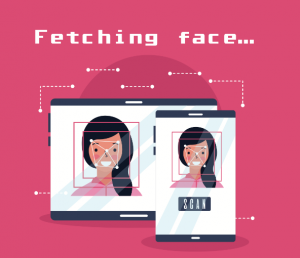The Disturbing Rise of AI-Powered “Undressing” Bots and the Fight Against Deepfake Abuse

By: Peter, Tech Expert at PlayTechZone.com
The rapid advancement of artificial intelligence (AI) has ushered in a new era of technological marvels, but it has also opened the door to unsettling ethical dilemmas. One such dilemma is the emergence of AI-powered bots capable of digitally removing clothing from images, a technology with deeply concerning implications, especially when used to target minors.
This article delves into the alarming trend of “undressing” bots, their proliferation on platforms like Telegram, and the broader fight against the malicious use of deepfake technology.
The DeepNude Precedent and the Telegram Bot
In 2019, the world got a chilling glimpse into the potential for AI abuse with the emergence of DeepNude, an app that employed generative adversarial networks (GANs) to create fake nude images of women. While public outcry led to the app’s swift removal, it exposed a vulnerability that malicious actors were quick to exploit.
Security researchers at Sensity AI soon uncovered a similar technology being deployed through a bot on the messaging app Telegram. This bot, freely available and easy to use, allows users to submit images of clothed individuals and receive back manipulated images depicting them nude.

The Scope of the Problem and the Gamification of Harassment
The Telegram bot’s accessibility and anonymity have fueled its disturbing popularity. Sensity AI estimates that as of July 2020, the bot had been used to target at least 100,000 women, with a significant portion suspected to be underage.
Worryingly, the bot’s ecosystem extends beyond simple image manipulation. It’s intertwined with a network of Telegram channels dedicated to sharing and even “rating” the generated images, creating a perverse gamification of harassment. This system incentivizes users to target more individuals and share their creations, contributing to a vicious cycle of abuse.

Deepfakes: A New Dimension of Harassment and Abuse
The use of deepfakes for malicious purposes, particularly in the realm of non-consensual intimate imagery, adds a new layer of complexity to an already pervasive issue.
Traditional revenge porn relies on the distribution of real images or videos without consent. Deepfakes, however, introduce the possibility of creating entirely fabricated yet highly realistic content, making it even more challenging for victims to seek justice or recourse.
The potential reach of this technology extends beyond individual harassment. High-profile individuals, including celebrities and journalists, have been targeted with deepfake pornographic content, often as part of smear campaigns or attempts at silencing dissenting voices.

Combating Deepfake Abuse: A Multifaceted Challenge
Addressing the threat of deepfake abuse requires a multi-pronged approach involving technological advancements, legal frameworks, and societal awareness.
1. Technological Countermeasures:
- Deepfake Detection: Researchers are actively developing AI-powered tools to detect deepfakes by identifying subtle inconsistencies in the generated images or videos.
- Image Provenance Verification: Technologies like blockchain can be used to create tamper-proof records of an image’s origin, making it easier to identify manipulated content.
2. Legal Frameworks:
- Legislation Against Deepfake Abuse: Many countries are working on legislation specifically criminalizing the non-consensual creation and distribution of deepfake pornography.
- Strengthening Existing Laws: Existing laws related to harassment, defamation, and revenge porn can be updated to encompass deepfake-related offenses.
3. Raising Awareness and Education:
- Educating the Public: Raising awareness about the existence and potential harms of deepfakes is crucial to empower individuals to identify and report such content.
- Promoting Digital Literacy: Teaching individuals how to critically assess online content and identify potential deepfakes can help mitigate the spread of misinformation.
Resources and Further Reading:
- Sensity AI: https://sensity.ai/ – A cybersecurity company specializing in detecting and mitigating the abuse of synthetic media.
- The Cyber Civil Rights Initiative (CCRI): https://cybercivilrights.org/ – An organization dedicated to combating online harassment, including the non-consensual distribution of intimate images.
- Witness: https://www.witness.org/ – An international organization using video and technology to protect human rights, including combating the spread of misinformation.
The rise of AI-powered “undressing” bots is a stark reminder of the potential for technology to be used for harmful purposes. Combating this threat requires a collective effort from tech companies, lawmakers, researchers, and individuals to create a safer and more ethical digital landscape.








